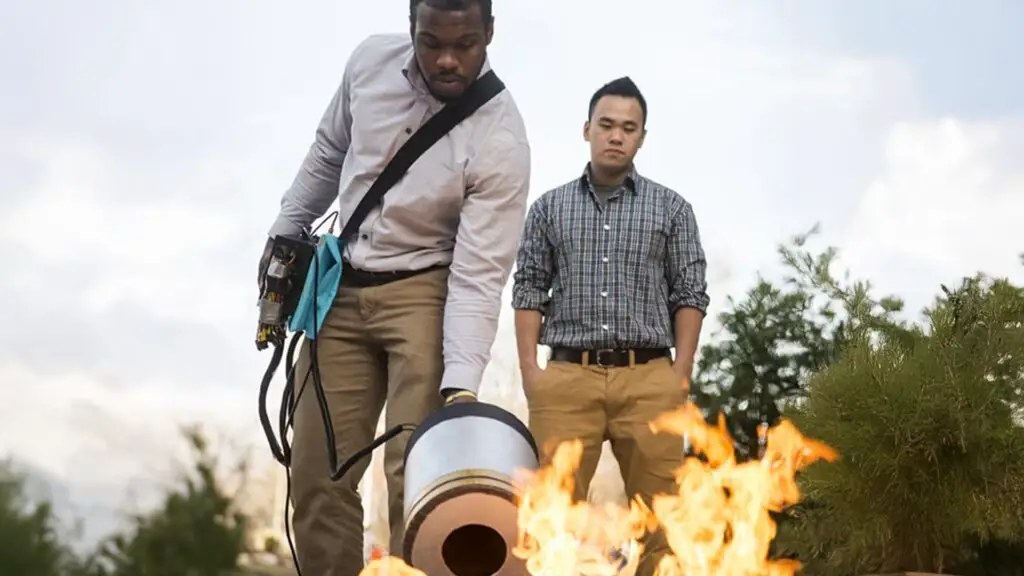Man shares why he has remained standing for 12 years without ever sitting down

- Mumbai’s Standing Babas embrace vows of perpetual upright posture to achieve spiritual enlightenment and burn karma.
- Baba Raj Natha’s 12-year standing commitment stems from a heated fallout with his guru over a failed baking task.
- This ascetic practice highlights Hinduism’s ancient tradition of physical austerity for divine proximity and salvation.
Mumbai, India – In the bustling streets of Mumbai, where the chaos of urban life meets ancient spiritual traditions, a reclusive holy man named Baba Raj Natha has captured global intrigue with an extraordinary act of devotion.
For over a decade, he has remained on his feet, refusing to sit or lie down, even during moments of rest or sleep.
This extreme vow, rooted in Hindu ascetic practices, draws from a deep-seated belief in enduring hardship to transcend worldly attachments and attain moksha, or liberation from the cycle of rebirth.
The story begins in the early 1990s, when Raj Natha, then a young disciple seeking spiritual guidance, encountered a pivotal moment that would redefine his life.

As part of his training under a revered guru, he was tasked with a seemingly mundane chore: baking bread.
Unfamiliar with the process, Raj Natha accidentally burned the loaves, igniting his teacher’s fury. The guru, in a fit of rage, physically assaulted him and expelled him from the ashram.
Overwhelmed by anger and humiliation, Raj Natha made a solemn pledge right then—to stand continuously for 12 years as a form of penance and spiritual rebellion.
This revelation came to light during a rare encounter documented in a 2007 Travel Channel episode of “Culture Shock,” where host Shenaz Treasuryvala ventured into Mumbai’s lesser-known neighborhoods to explore subcultures of holy men known as Babas.
These individuals, often addressed with the Persian-origin honorific “Baba” meaning “father” or “wise elder,” renounce material possessions and human pleasures in pursuit of divine closeness.
Treasuryvala described Babas as reclusive figures leading austere lives, refraining from indulgences to focus on inner purity.
Raj Natha’s home, tucked away in a modest corner of the city, became the site of this eye-opening meeting.
As Treasuryvala approached, she found him balanced on one leg, the other elevated slightly for brief relief—a common technique among Standing Babas to alleviate strain without breaking their vow.

“I was inspired by something my spiritual teacher did to me,” Raj Natha explained calmly, his voice steady despite years of physical endurance. He recounted the bread-baking incident in detail, emphasizing how the beating sparked his resolve.
This wasn’t mere stubbornness; it was a transformative act to channel negative emotions into spiritual growth.
But Raj Natha isn’t alone in this rigorous path. Around the corner from his residence, Treasuryvala met another unnamed Standing Baba who had upheld his vow for nine years.
Motivated differently, this man followed his guru’s direct instruction to remain upright as a gesture of obedience and devotion.
“My teacher told me I should keep standing in order to please him,” he shared. To manage discomfort, he alternates raising and lowering his legs, reporting minimal serious pain.
Occasional massages from friends provide relief, underscoring the communal support within these ascetic circles.
The tradition of Standing Babas traces back centuries within Hinduism, where physical austerities like tapasyas—intense self-disciplines—are seen as pathways to burn off bad karma and escape samsara, the endless cycle of life and death.
Historical texts, including the Upanishads and Puranas, reference sadhus undertaking similar feats, such as standing on one leg for years or holding arms aloft indefinitely.
In modern times, this practice persists among various sects, particularly during massive gatherings like the Kumbh Mela, where ascetics showcase their vows to inspire devotees.
Health experts note the profound physiological challenges involved. Prolonged standing can lead to swollen limbs, varicose veins, and joint issues, yet many Babas adapt ingeniously.
They use slings or swings to support one leg while keeping the body vertical, ensuring circulation without compromising the pledge.
Nutrition plays a role too; a simple diet of fruits, nuts, and milk sustains them, often supplemented by herbal remedies passed down through generations.
Despite these hardships, practitioners claim enhanced mental clarity and spiritual visions, attributing their resilience to divine grace.
Expanding beyond Mumbai, similar stories emerge from across India. At the 2025 Maha Kumbh Mela in Prayagraj, a sadhu named Rupesh Puri from the Juna Akhada claimed to have stood continuously for six years, drawing crowds amazed by his unyielding posture.
Further north, in Uttar Pradesh, 25-year-old Khadashvari Baba has committed to 12 years of upright living, completing three so far as part of ancient sects experiencing a resurgence under contemporary influences.
These vows aren’t isolated quirks but reflect a broader cultural ethos. Hinduism’s emphasis on spiritual enlightenment as life’s highest goal encourages such extremes, where the body becomes a vessel for karmic purification.
Babas believe that by subjecting themselves to pain, they accelerate their journey toward salvation, detaching from ego and desires.
In Mumbai’s vibrant yet unforgiving environment, this subculture thrives in pockets like Dharavi, where holy men coexist with everyday hustlers, offering blessings and wisdom to passersby.
| Key Fact | Detail |
|---|---|
| Vow Origin | Disagreement with guru over burnt bread during baking task |
| Duration | 12 years, starting in the mid-1990s |
| Daily Adaptation | Alternates legs using slings; receives massages for pain relief |
| Philosophical Basis | Burns bad karma to achieve moksha and escape rebirth cycle |
| Similar Practices | Other Babas stand for 9-40 years; some raise arms or remain silent |
| Location Hub | Mumbai neighborhoods; showcased at events like Kumbh Mela |
| Health Management | Simple diet, herbal aids; minimal reported long-term damage |
As global interest in mindfulness and extreme wellness surges, the Standing Babas’ lifestyle intrigues researchers studying human limits.
Psychologists link it to flow states achieved through discipline, while anthropologists view it as a living link to India’s mystical heritage.
Yet, for Raj Natha, it’s personal—a daily testament to turning adversity into enlightenment.
Venturing deeper, one wonders about the unseen toll. Does the constant vigilance forge unbreakable resolve, or does it whisper doubts in quiet hours?
Raj Natha’s eyes, serene yet piercing, hint at untold experiences, like nocturnal visions or profound inner dialogues that keep him anchored.
In recent years, social media has amplified these tales, with videos from Kumbh Melas going viral, showing Babas meditating upright amid throngs of pilgrims.
One such clip from Khandagiri Kumbh Mela features a Baba balancing on one leg, evoking awe and questions about the human spirit’s capacity.
What drives a person to such lengths? For Raj Natha, the answer lies in that fateful bakery mishap, but perhaps there’s more—a cosmic pull, a hidden leela of the divine.
As he nears the end of his vow, whispers circulate: will he sit at last, or extend his stand in eternal devotion?
The world watches, curious if this man, forever on his feet, holds secrets to transcending our own grounded limitations.































